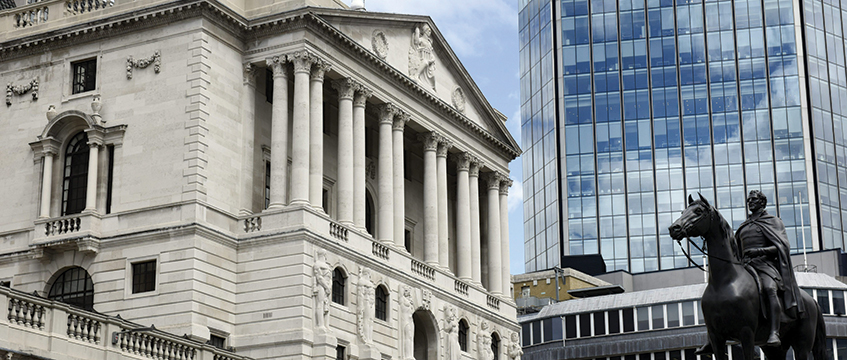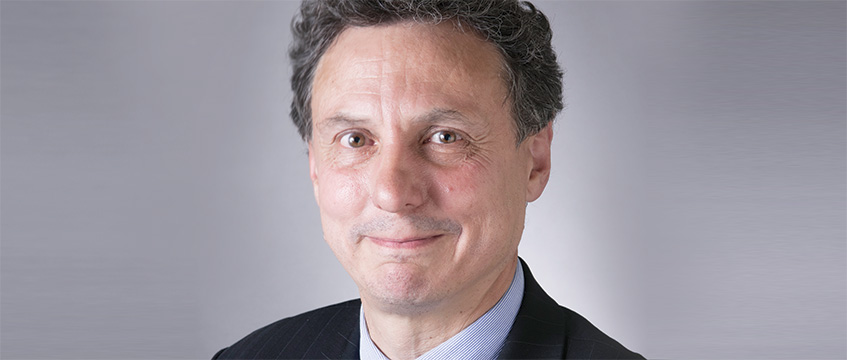The long-term decline in interest rates is a product of demographic change and not just the financial crisis, according to CBRE. As a result the “normalisation” of rates that is being predicted may not be as severe as many believe.
CBRE’s report, What interest rate normalization means for global real estate investors, coincides with many central banks signalling an end to quantitative easing and a rise in interest rates as the global economy recovers.
Many commentators fear the impact this will have on real estate: since 2007, considerable investment into the sector has been driven by low yields elsewhere. However, CBRE’s research says that rates had begun to decline well before the crisis, as more savers globally pushed down rates.
While quantitative easing has had an effect since 2007, the research says global demographics are the key to falling interest rates, with the share of the world’s population aged 40 to 54 the key demographic variable as this correlates strongly with the number of savers.
According to CBRE: “Concerns about rising real and nominal long-term interest rates are overblown. The likely increase in rates will be less than the consensus of economic forecasters and they will level off at well below pre-GFC levels.”
This means it is unlikely the rise in interest rates will be anywhere near as sharp as some economists predict.
However, the outlook for long-term rates depends on what happens to demographics, GDP growth, QE and expected inflation. CBRE says that:
- Real and nominal long-term interest rates will probably increase.
- A smaller world population aged 40 to 54 will cause around a 20-30bp increase in interest rates over 10 years.
- Central banks’ balance sheet normalisation will have an upward effect, but increases will be limited.
- QE and it withdrawal remains hard to predict.
What’s the impact on real estate?
There is a very close statistical relationship between real interest rates and yields. Thus the fall in yields that began in the mid 1990s is not just a product of quantitative easing; it is linked to the fall in interest rates.
CBRE says that, while the years of yield compression have passed, a period of heavy decompression is unlikely.
Provided long-term interest rates continue to be pushed down by savers, real estate will retain its allure.
UK interest rates are going up, but 2% will be the new normal – which is good news for commercial real estate
Neil Blake, EMEA chief economist and global head of forecasting, CBRE
The Bank of England keeps signalling higher interest rates, but falling inflation and weak growth data continue to push the other way. So why is the Bank so keen on a hike? There are three motivations: the “normalisation” of policy, keeping an eye on the inflation target and what I call the “Duke of York” motivation: they want to be able to march rates all the way up so that they can march them all the way down again when the next recession comes.
Eventually, the Bank of England will get its way but there is still the question of where rates will end up. What will the “new normal” be in five or 10 years’ time? The current obsession is short-term policy rates: when will they go up, by how much and what happens when quantitative easing turns into quantitative tightening? However, it is worthwhile standing back to look at what has happened to long-term rates, such as 10-year government bond yields (which are far more market determined than short-term rates), over a long-period of time and not just since the GFC.
There have been ups and downs with long-term rates but the dominant feature is one of persistent long-term falls ever since the mid-1980s. This is partly about inflation. Inflation expectations have come down; as a result, so have long-term interest rates. But real long-term interest rates (after allowing for inflation) have come down, too. Real long-term rates are a big driver of property yields and property pricing and are the ones to watch for real estate investors.
The concern is that once QE is reversed, real long-term rates will go back to where they were pre-GFC. For the UK, that would mean a return to around 3% in real terms or 5% nominal. That is a long way from the current rate of 1.4% nominal (around -0.5% real).
Fortunately, a considerable body of research, including recent work carried out by CBRE, points to other forces that existed before the GFC and which have continued to push real long-term rates down. They are: weaker economic growth, which means weaker demand for funds, on the one hand, and a glut of savings (which further tilts the savings investment balance), on the other. As far as we can tell, the savings glut is largely driven by demographic factors. An increasing share of the global population is in the peak savings age bracket. This has been a global phenomenon.
This does not mean that rates will stay low for ever. The demographic effects are levelling off and reversing QE will also have an effect. But CBRE analysis still points to UK long-term rates of just 2.5% (0.5% real) in 10 years or so. That does not mean that they will never be higher than that – but if they are, they will come down again.
So much for 10-year interest rates, what about the Bank of England’s policy rate? The Bank Rate is rarely higher than 10-year gilt yields. This means that our 2.5% long-term rate forecast is essentially a ceiling for Bank Rate. Incidentally, 2.5% is where governor Mark Carney suggested the Bank’s “new normal” would be back in 2014, so perhaps he has been doing the same analysis. Our 2.5%, however, is a ceiling for the Bank Rate, not a new norm. Going on past evidence, the average value of the new normal Bank Rate should be around 50bp lower than the 10-year gilt yields, so that gives us a new normal of 2%. That is still 150bp higher than today but it’s not as scary as going back to the pre-GFC normal of around 4.5%.
For property investors, this all means an increase in real long-term rates, from -0.5% to +0.5%, so a 100bp upwards pressure on yields. The spread between property yields (IPD all property) and real long-term interest rates in the UK used to be in the 350-400bp range pre-GFC. Now they are in the 500-600bp range. Part of the reason for the increase is that investors do not believe that today’s low real interest rates are permanent – and they are probably right. Once they are back to the “new normal”, though, there is every reason to believe that the spread will close back towards historic averages. That means that yields in 10 years’ time will be no higher than today. They could even be lower.
Main image © Heikki Saukkomaa/Rex/Shutterstock
To send feedback, e-mail alex.peace@egi.co.uk or tweet @EGAlexPeace or @estatesgazette












